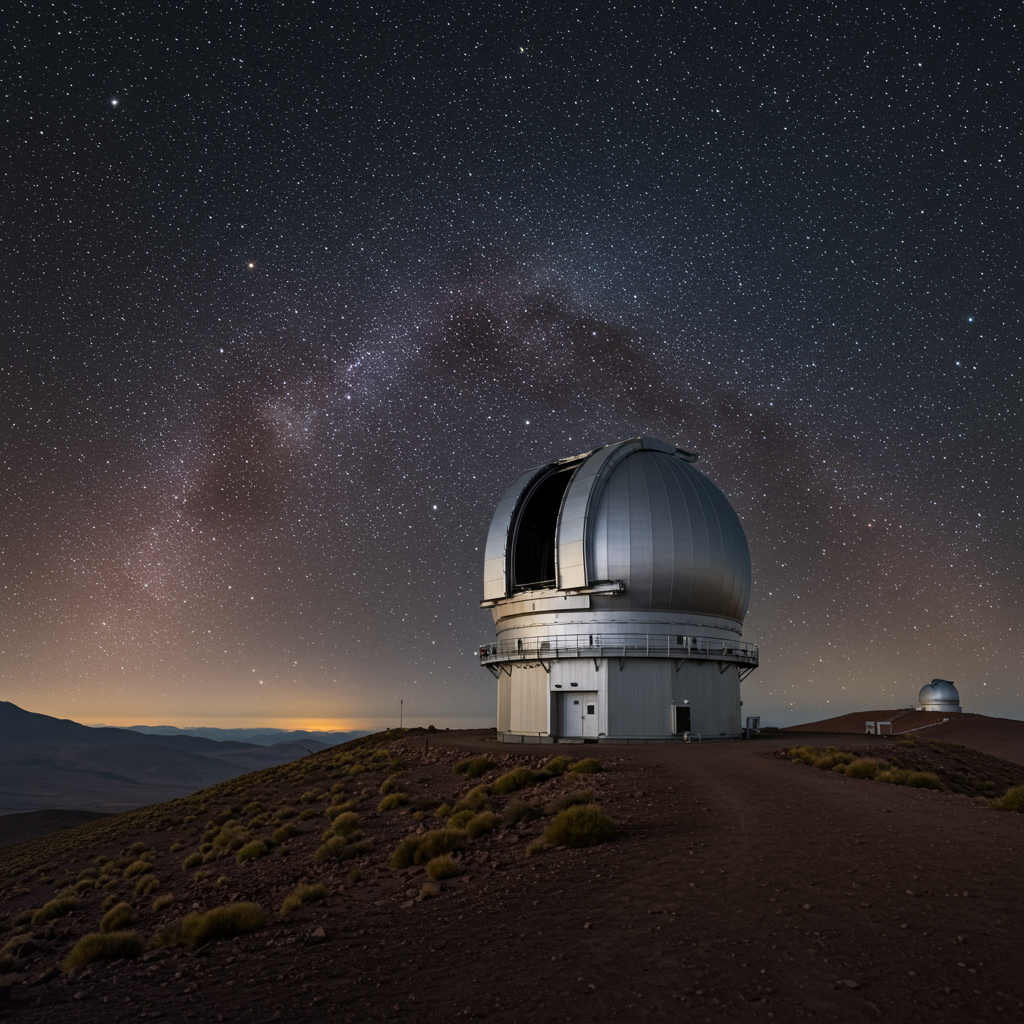Perched high in the arid mountains of Chile, the Vera C. Rubin Observatory is poised to revolutionize our understanding of the cosmos. This state-of-the-art facility isn’t just another telescope; it’s designed to conduct the most comprehensive survey of the night sky ever attempted.
At the heart of the Rubin Observatory is the Legacy Survey of Space and Time (LSST) Camera, recognized as the world’s largest digital camera ever built for astronomy. This monumental instrument boasts an astonishing 3.2-gigapixel resolution – powerful enough to clearly image a golf ball from 15 miles away. Developed over two decades by a team led by the Department of Energy’s SLAC National Accelerator Laboratory, the camera is comparable in size and weight to a small car.
A Dynamic View of the Cosmos
Unlike traditional telescopes that zoom in on specific, narrow targets, the Rubin Observatory operates like a celestial “lighthouse.” Its unique design, featuring an 8.4-meter mirror and a wide 3.5-degree field of view, allows it to rapidly scan large portions of the southern sky. Taking 15-second exposures every 20 seconds on clear nights, the telescope is designed to map the entire available sky every few nights. This constant motion is crucial for studying the “transient sky” – objects that change in brightness or position.
The observatory’s ambitious primary project is the 10-year Legacy Survey of Space and Time (LSST). This decade-long endeavor is expected to detect millions of astronomical events every night, from the movement of asteroids in our solar system to distant supernova explosions. Over its lifespan, the LSST will generate a staggering 60 petabytes of data, creating what researchers call the “greatest movie of the sky that mankind has ever made.”
Unlocking Cosmic Mysteries: Dark Matter and Dark Energy
The main scientific goals of the Rubin Observatory center on addressing some of the universe’s most profound questions, particularly those surrounding dark matter and dark energy. These enigmatic components make up an estimated 95% of the universe’s mass and energy. By precisely measuring the effects of gravity through phenomena like weak gravitational lensing (the bending of light by massive objects, including dark matter), the LSST will help scientists map the distribution of dark matter and study the history of cosmic expansion driven by dark energy. The observatory is aptly named in honor of American astronomer Vera C. Rubin, whose pioneering work provided early strong evidence for dark matter.
Beyond these fundamental mysteries, the LSST will also provide unprecedented data for:
Cataloging billions of stars and galaxies.
Discovering and tracking millions of objects in our own solar system, including near-Earth asteroids and Kuiper belt objects.
Detecting and characterizing transient events with rapid alerts for follow-up studies.
Mapping the detailed structure of our Milky Way galaxy.
- Identifying the optical counterparts of gravitational wave events.
- https://www.theguardian.com/science/2024/feb/05/astronomy-telescope-chile-vera-c-rubin-observatory
- https://en.wikipedia.org/wiki/VeraC.Rubin_Observatory
- https://www.energy.gov/science/articles/largest-digital-camera-ever-built-astronomy-makes-its-debut
- https://www.space.com/worlds-highest-observatory-tao-university-of-tokyo-atacama-opens
- https://www.comewalkwithmeuk.co.uk/2025/03/the-fishermans-way-salema-to-sagres.html
Chile: The Ideal Astronomical Platform
Chile was chosen as the site for the Rubin Observatory due to its exceptional conditions for ground-based astronomy. The high altitude of the Andes mountains, combined with the arid climate and minimal light pollution in sparsely populated regions, provides an average of 256 clear nights per year. The Rubin site on Cerro Pachón, over 8,900 feet above sea level, offers a privileged view of the southern sky and solidifies Chile’s position as a leading hub for astronomical observation.
Currently under construction with operations targeted for 2025, the Rubin Observatory represents a major international collaboration and a significant investment in scientific discovery. While facing potential challenges from the growing number of low Earth orbit satellites, strategies are being developed to mitigate their impact on data quality.
Alongside groundbreaking ground-based facilities like the Vera C. Rubin Observatory, space telescopes such as the James Webb Telescope continue to provide astonishing and previously unseen insights into the vastness and complexity of our Universe. Together, these powerful instruments are pushing the boundaries of cosmic exploration.




